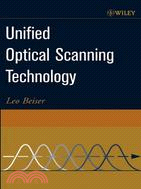cohesive view of the expanding field of optical scanning, in a single compact volume
Optical scanning is a systematic sampling of spatial information, transforming images or data to or from a temporal signal for electronic processing. The field of optical information handling has been developing rapidly, with many of its classical forms being transformed in new and fascinating ways. For instance, the once-discrete fields of serial and parallel optical information transfer are evolving into new hybrid systems as researchers add the flexibility of optical scanning for greater operational advantage in data manipulation and transfer. Insight for such creative advancement is fostered with the unification of unapparent or secluded concepts.
Written by an award-winning leader in the field, this is a thoroughly integrated overview of the many facets and disciplines of optical scanning. It brings together scanning theory, scanned resolution, deflection and modulation devices, optical transfer techniques, positional error analysis and control, system architecture, new research, and the unification of complementary or analogous processes, such as active and passive scanning systems.
Of particular utility to both practitioner and student are such features as:
An overview of the technology and unifying principles, including active and passive scanning, optical transfer, and system architecture
In-depth chapters on scanning theory and processes, scanned resolution, scanner devices and techniques, and the control of scanner beam misplacement
A comprehensive review of the government-sponsored research of agile beam steering, now primed for commercial adaptation
A unique focus on the Lagrange invariant and its revealing resolution invariant












